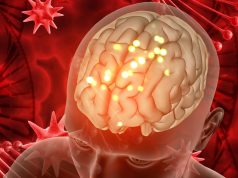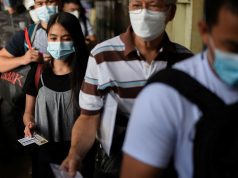
The following is a summary of some recent studies on COVID–19. They include research that warrants further study to corroborate the findings and that has yet to be certified by peer review.
Higher estrogen levels tied to lower COVID death risk
A new study strengthens suspicions that the female hormone estrogen protects against death from COVID–19.
Researchers in Sweden studied 14,685 older women with COVID–19, all of whom were past menopause, during which estrogen levels decline dramatically.
Seventeen percent were taking estrogen supplements to relieve menopausal symptoms.
After adjusting for other risk factors, women getting extra estrogen had a 53% lower risk of dying from COVID–19 compared to untreated women, the researchers reported on Monday in BMJ Open.
Observational studies such as this one cannot prove higher estrogen levels are protective. Furthermore, the women were infected before vaccines were available, said Dr. Malin Sund of Umea University.
“Vaccination has clearly been shown to protect from COVID–19 related mortality and the potential added value from estrogen (in vaccinated women) cannot be estimated from this data,” Sund said. The idea that estrogen might be protective in hospitalized COVID–19 patients is now being tested more rigorously in a randomized controlled trial at Tulane University.
Antacid shows promise against COVID–19 symptoms
In non-hospitalized, unvaccinated adults with mild-to-moderate COVID–19, treatment with a high dose of the antacid drug famotidine helped speed resolution of symptoms and inflammation in a small randomized controlled trial.
Roughly half of those in the 55-patient trial took famotidine – the main ingredient in Johnson & Johnson’s widely used over-the-counter Pepsid heartburn drug – three times a day for two weeks. The others took a dummy pill. Patients in the famotidine group had faster resolution of 14 of 16 symptoms assessed in the study, including loss of smell and taste, difficulty breathing and abdominal pain.
Famotidine treatment also led to faster improvements in markers of inflammation without any detrimental effects on patients’ immune responses, the researchers reported in the journal Gut. About a third of the study’s participants were Black and a quarter Hispanic.
“We hope that the data we are sharing with this study guide future trials that are necessary to confirm famotidine as a treatment for patients with COVID–19,” study leader Dr. Tobias Janowitz of Northwell Health and Cold Spring Harbor Laboratory said in a news release.
U.S. may have overestimated COVID–19 hospitalizations
U.S. statistics likely overestimate how many patients have been hospitalized for COVID–19, according to a new study.
At 60 hospitals near Boston, Pittsburgh and Chicago, researchers manually reviewed the charts of a random sample of 1,123 patients with confirmed coronavirus infections hospitalized between March 2020 and August 2021.
Roughly 1-in-4 patients “actually were admitted for a different problem and should not have been included” in data analytics calculations of the severity of COVID–19, said Dr. Shawn Murphy of Massachusetts General Hospital in Boston.
Patients were more likely to have been admitted specifically for COVID–19 when local infection rates were high, his team reported on Tuesday on medRxiv ahead of peer review. When infection rates were low last summer, up to half the patients were hospitalized for other reasons, with SARS-CoV-2 infection found coincidentally on mandatory testing.
The researchers were able to identify indicators in patients’ charts that admissions were actually due to COVID–19, such as whether doctors ordered lab tests related to inflammation.
“This study highlights an important weakness in COVID–19 reporting, which might have implications on intensive care utilization, cost analysis, resource planning, and research,” said Jeffrey Klann, also of Mass General. Adding the identified indicators to data analytics software “could help mitigate these problems.”
—Reporting by Nancy Lapid and Megan Brooks; Editing by Bill Berkrot









